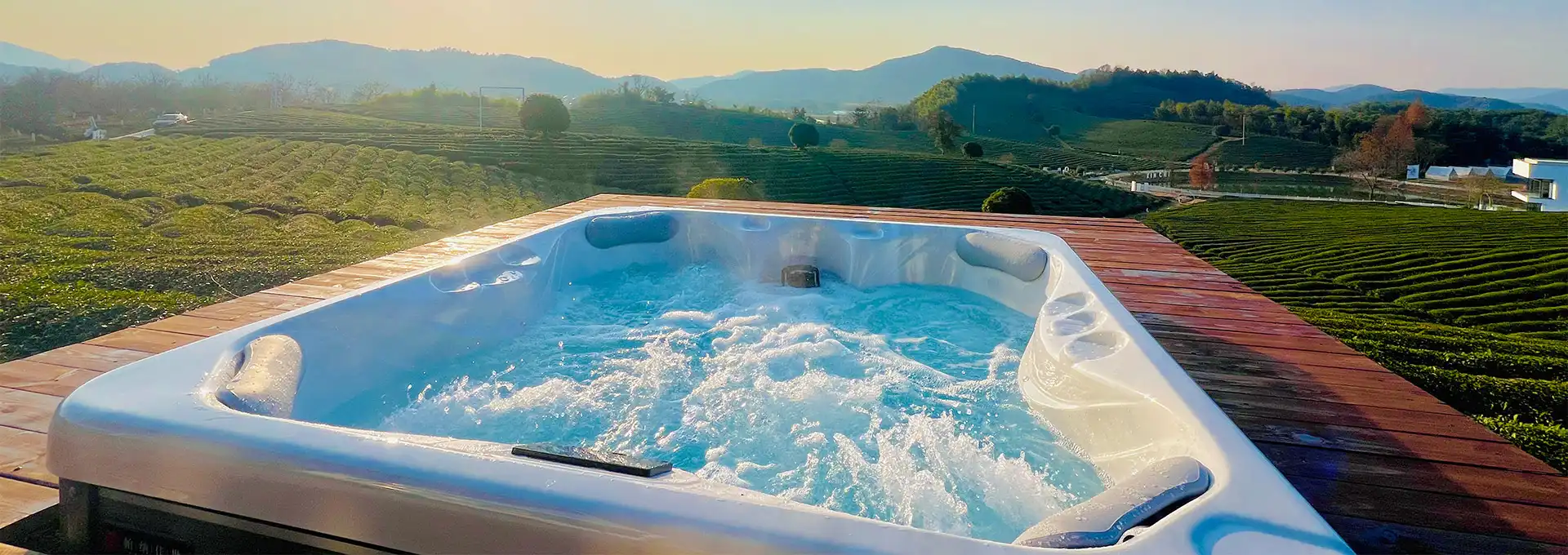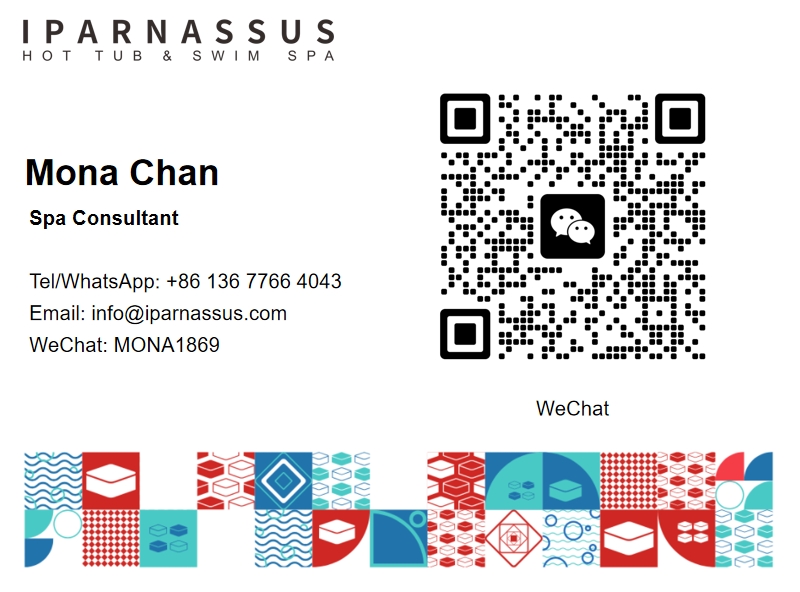What do you need to maintain a hot tub?
2025-07-10 22:26:20
Proper hot tub maintenance requires a comprehensive understanding of essential supplies, equipment, and regular care procedures to ensure safe, clean, and enjoyable spa experiences. Maintaining a hot tub involves more than simply adding chemicals to the water; it encompasses water testing, filtration system care, equipment inspection, and preventive maintenance that protects your investment while ensuring optimal performance. From basic cleaning supplies and water treatment chemicals to specialized testing equipment and replacement parts, hot tub owners must assemble the right tools and develop consistent maintenance routines. Understanding what you need to maintain a hot tub effectively helps prevent costly repairs, extends equipment life, and guarantees crystal-clear water for relaxation and hydrotherapy benefits.
What Chemicals Do You Need for Hot Tub Maintenance?
Essential Sanitizing Chemicals
The foundation of hot tub water treatment relies on effective sanitizing chemicals that eliminate bacteria, viruses, and other harmful microorganisms that can thrive in warm water environments. Chlorine-based sanitizers, including sodium dichlor and calcium hypochlorite, provide reliable disinfection and oxidation for most hot tub applications. Bromine tablets or granules offer an alternative sanitizing option that remains stable at high temperatures and produces fewer odors than chlorine systems. Many hot tub owners prefer mineral sanitizing systems that combine silver and copper ions with reduced chemical levels for gentler water treatment. Regardless of your chosen sanitizing method, maintaining proper levels between 1-3 ppm for chlorine or 2-4 ppm for bromine ensures effective disinfection while preventing over-treatment that can cause skin and eye irritation.
Water Balance and pH Control
Maintaining proper water balance in your hot tub requires regular monitoring and adjustment of pH, alkalinity, and calcium hardness levels that affect water quality and equipment longevity. pH levels should remain between 7.2-7.8 for optimal sanitizer effectiveness and user comfort, requiring pH increaser (sodium carbonate) or pH decreaser (sodium bisulfate) for adjustments. Total alkalinity acts as a buffer for pH stability and should be maintained between 80-120 ppm using alkalinity increaser when levels drop too low. Calcium hardness prevents corrosion and scale formation, with ideal levels between 150-300 ppm requiring calcium increaser in soft water areas. Regular testing and adjustment of these parameters ensures your hot tub water remains balanced, comfortable, and safe while protecting equipment from damage caused by corrosive or scaling conditions.
Shock Treatments and Specialty Chemicals
Weekly shock treatments eliminate organic contaminants and chloramine buildup that regular sanitizing cannot address effectively in hot tub water maintenance. Non-chlorine shock (potassium monopersulfate) provides powerful oxidation without raising chlorine levels, allowing immediate hot tub use after treatment. Chlorine shock options include sodium dichlor for routine treatments or calcium hypochlorite for heavy contamination situations. Additional specialty chemicals enhance water quality and equipment protection, including metal sequestrants that prevent staining from iron and copper, clarifiers that improve water clarity, and enzyme products that break down organic oils and lotions. Foam control products help eliminate persistent foam issues, while scale prevention chemicals protect heating elements and plumbing from mineral buildup in hard water areas.
How Often Should You Clean Your Hot Tub?
Daily and Weekly Maintenance Tasks
Consistent daily and weekly hot tub maintenance prevents major problems while ensuring optimal water quality and equipment performance throughout the spa's operating season. Daily tasks include checking water temperature, skimming surface debris, and testing sanitizer levels to maintain proper water chemistry. Weekly maintenance involves comprehensive water testing for pH, alkalinity, and sanitizer levels, followed by necessary chemical adjustments to keep water balanced. Weekly shock treatments eliminate organic buildup and restore water clarity, while filter inspection and cleaning ensure proper filtration performance. Hot tub cover cleaning and inspection should occur weekly to prevent contamination and maintain insulation effectiveness. These routine tasks, when performed consistently, prevent minor issues from developing into costly repairs or complete water changes.
Monthly Deep Cleaning Requirements
Monthly hot tub maintenance involves more thorough cleaning and inspection procedures that address areas not covered in daily and weekly routines. Filter cartridge deep cleaning or replacement ensures optimal filtration performance and prevents flow restrictions that can damage circulation pumps. Hot tub shell cleaning removes biofilm, scale, and stubborn deposits that accumulate over time, while jet cleaning eliminates buildup that can harbor bacteria and reduce hydrotherapy effectiveness. Monthly water testing should include comprehensive analysis of all chemical parameters, including cyanuric acid levels in chlorinated systems and total dissolved solids that indicate when complete water replacement is necessary. Equipment inspection during monthly maintenance helps identify worn components, loose connections, or developing issues that require attention before they cause system failures.
Seasonal Maintenance and Winterization
Seasonal hot tub maintenance varies significantly based on climate conditions and usage patterns, with special attention required for winter protection in freezing climates. Pre-winter maintenance includes thorough equipment inspection, plumbing system cleaning, and antifreeze protection for hot tubs that will be shut down during cold months. Spring startup requires complete water system flushing, filter replacement, and comprehensive equipment testing to ensure proper operation after winter storage. Summer maintenance focuses on increased chemical monitoring due to higher usage and ambient temperatures that accelerate chemical consumption. Fall preparation involves equipment inspection, cover maintenance, and heating system optimization for increased winter operation costs. Seasonal maintenance scheduling ensures your hot tub remains ready for use while preventing weather-related damage and equipment failures.
What Tools Are Essential for Hot Tub Care?
Water Testing Equipment
Accurate water testing forms the foundation of effective hot tub maintenance, requiring reliable equipment that provides precise measurements of critical chemical parameters. Digital test strips offer quick and convenient testing for multiple parameters simultaneously, including pH, alkalinity, sanitizer levels, and hardness. Liquid test kits provide more accurate results for critical measurements, particularly for pH and chlorine levels that require precise control. Electronic pH and chlorine meters offer professional-grade accuracy for owners who prefer digital readings and automatic temperature compensation. Regular calibration and proper storage of testing equipment ensure accurate results that guide appropriate chemical adjustments. Many hot tub owners maintain multiple testing methods to verify critical readings and ensure water safety through accurate chemical monitoring.
Cleaning and Maintenance Supplies
Proper hot tub care requires specialized cleaning supplies designed for spa materials and equipment that won't damage surfaces or affect water chemistry. Spa-specific surface cleaners remove oils, scale, and biofilm without leaving residues that can foam or cloud water. Filter cleaning solutions and degreasing agents restore filter effectiveness while extending cartridge life through proper maintenance. Jet cleaning tools and brushes help remove buildup from hydrotherapy jets and plumbing systems that can harbor bacteria and reduce performance. Skimmer nets, vacuum systems, and debris removal tools keep hot tub water clean and clear between filtration cycles. Microfiber cloths and non-abrasive scrubbers protect acrylic surfaces while providing effective cleaning action for routine maintenance tasks.
Maintenance Tools and Equipment
Essential maintenance tools enable hot tub owners to perform routine repairs and adjustments that keep equipment operating efficiently and prevent costly service calls. Basic tool sets should include screwdrivers, pliers, and wrenches sized for common spa components and fittings. Multimeters help diagnose electrical issues, while pressure gauges assist with pump and heater troubleshooting. Replacement parts inventory should include common wear items like O-rings, gaskets, and fuse replacements that enable quick repairs. Safety equipment, including electrical testing devices and personal protective equipment, ensures safe maintenance procedures. Many hot tub owners invest in service manuals and diagnostic tools that enable them to perform advanced maintenance and troubleshooting procedures independently, reducing service costs while maintaining optimal equipment performance.
Conclusion
Effective hot tub maintenance requires the right combination of chemicals, cleaning supplies, testing equipment, and regular care routines to ensure safe, clean, and enjoyable spa experiences. By understanding essential sanitizing chemicals, establishing consistent cleaning schedules, and maintaining proper tools, owners can protect their investment while enjoying years of reliable performance.
Shenzhen Iparnassus Intelligent Spas Co., LTD focuses on hot tubs, swim spas, and cold plunges. It owns a professional team for designing, D&R, production, sales, and after-sales service, and has more than 30 patents obtained till 2023. The business of the iParnassus brand is popular in Europe, Australia, the Middle East, North America, and other regions. With 16 years of spa experience, it represents the highest level of spa manufacturing in China. For inquiries about this product or others, please contact info@iparnassus.com for dedicated service.
References
1. Johnson, R. & Williams, K. (2023). Comprehensive Hot Tub Maintenance Manual. Spa Care Publications, 4th Edition, 156-203.
2. Martinez, L. (2022). Water Chemistry Management in Residential Hot Tubs. Journal of Pool and Spa Maintenance, 28(5), 89-106.
3. Thompson, D. & Chen, M. (2021). Essential Tools and Equipment for Hot Tub Care. Home Spa Maintenance Quarterly, 15(3), 45-62.
4. Anderson, P. (2023). Seasonal Hot Tub Maintenance Strategies. Spa Industry Review, 31(8), 112-129.
5. Davis, S. & Brown, J. (2022). Chemical Treatment Protocols for Hot Tub Water Quality. Aquatic Chemistry Research, 19(7), 178-195.
6. Wilson, M. (2021). Filter Maintenance and Cleaning Procedures for Hot Tub Systems. Spa Equipment Care Guide, 12(4), 67-84.



